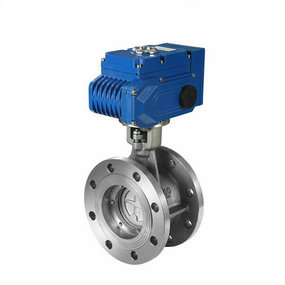Material of electric hard seal butterfly valve parts:
(The following materials are optional)
Valve body: cast iron, cast steel, stainless steel (304.316)
Butterfly plate: cast steel, alloy steel (hard chrome plated), stainless steel
Sealing ring: stainless steel, polylactide, anti-wear material
Valve rod: 2Cr13, 1Cr13 stainless steel
Packing: flexible graphite
|
Electric hard seal butterfly valve structure (flange type) Electric hard seal butterfly valve structure (wafer type)
|
Difference between electric hard seal butterfly valve and electric soft seal butterfly valve:
1. Soft seal is used in low pressure and normal pressure places, and hard seal can be used in medium and high pressure conditions.
2. Soft seal can be used in low temperature and normal temperature environment, while hard seal can be used in low temperature, normal temperature and high temperature environment.
3. Soft sealing butterfly valves are mostly of medium linear structure, while hard sealing butterfly valves are generally of single eccentric, double eccentric and triple eccentric structure.
4. The sealing performance of soft sealing butterfly valve is better than that of three eccentric hard sealing butterfly valve, but the three eccentric butterfly valve can maintain good sealing under high pressure and high temperature environment.
Advantages and disadvantages of electric hard seal butterfly valve and electric soft seal butterfly valve:
Hard sealing butterfly valve has a long service life, but its sealing performance is relatively worse than that of soft sealing.
The soft seal butterfly valve has the advantages of good sealing performance and the disadvantages of easy aging, wear and short service life.
Soft sealing butterfly valves are mostly suitable for opening, closing and regulating corrosive pipelines at normal temperature, while hard sealing butterfly valves are mostly used for heating, gas supply, gas, oil, acid and alkali and other environments.



